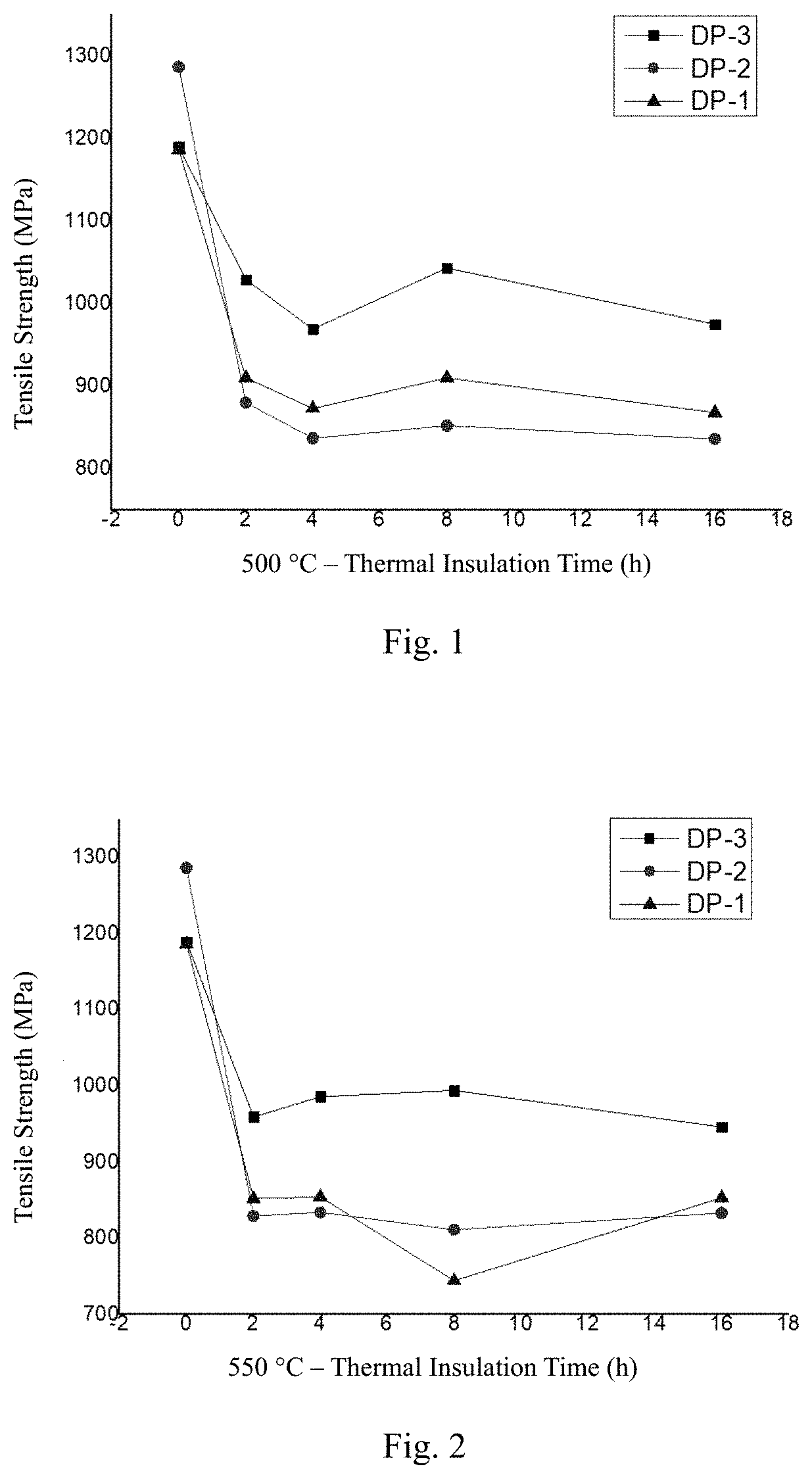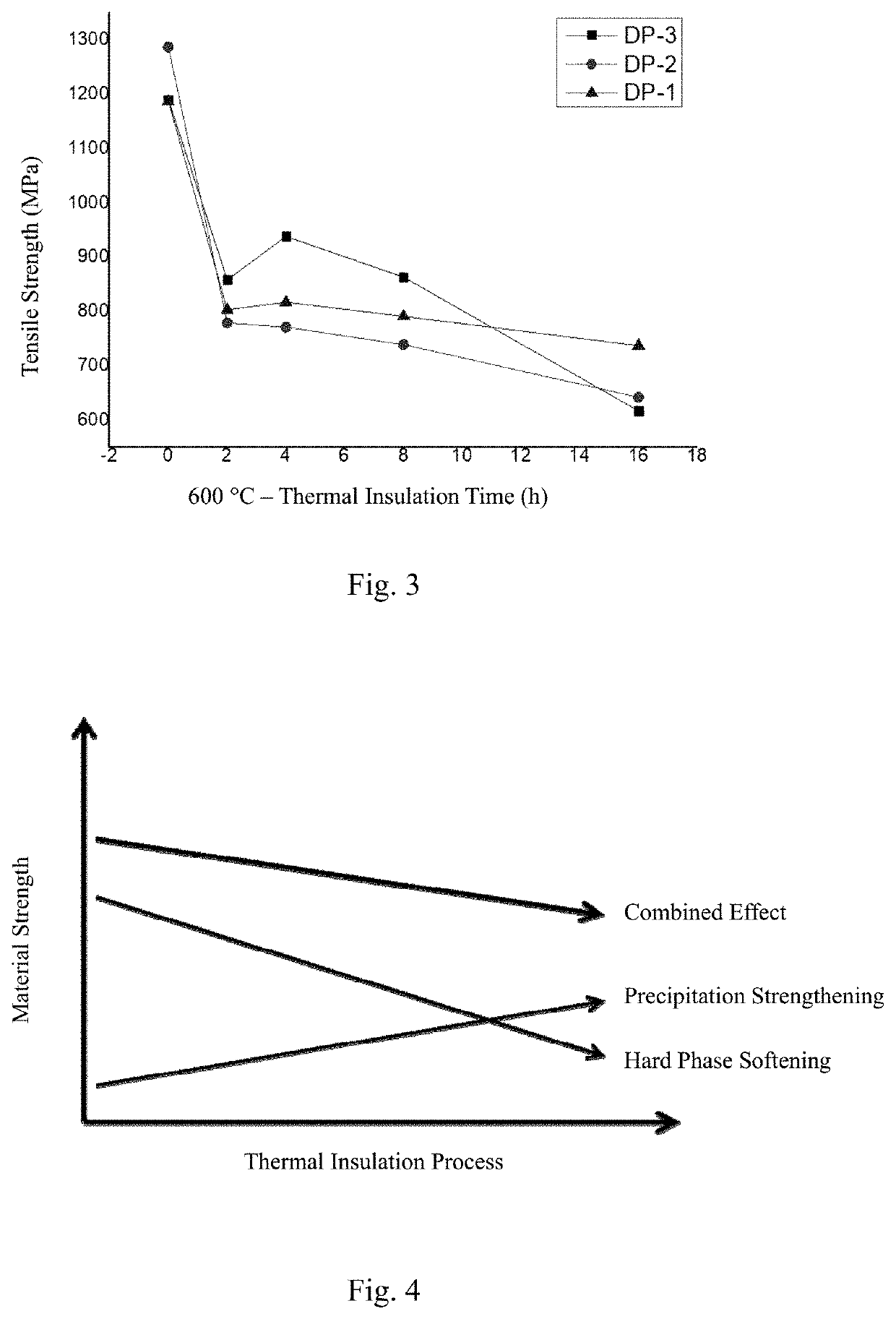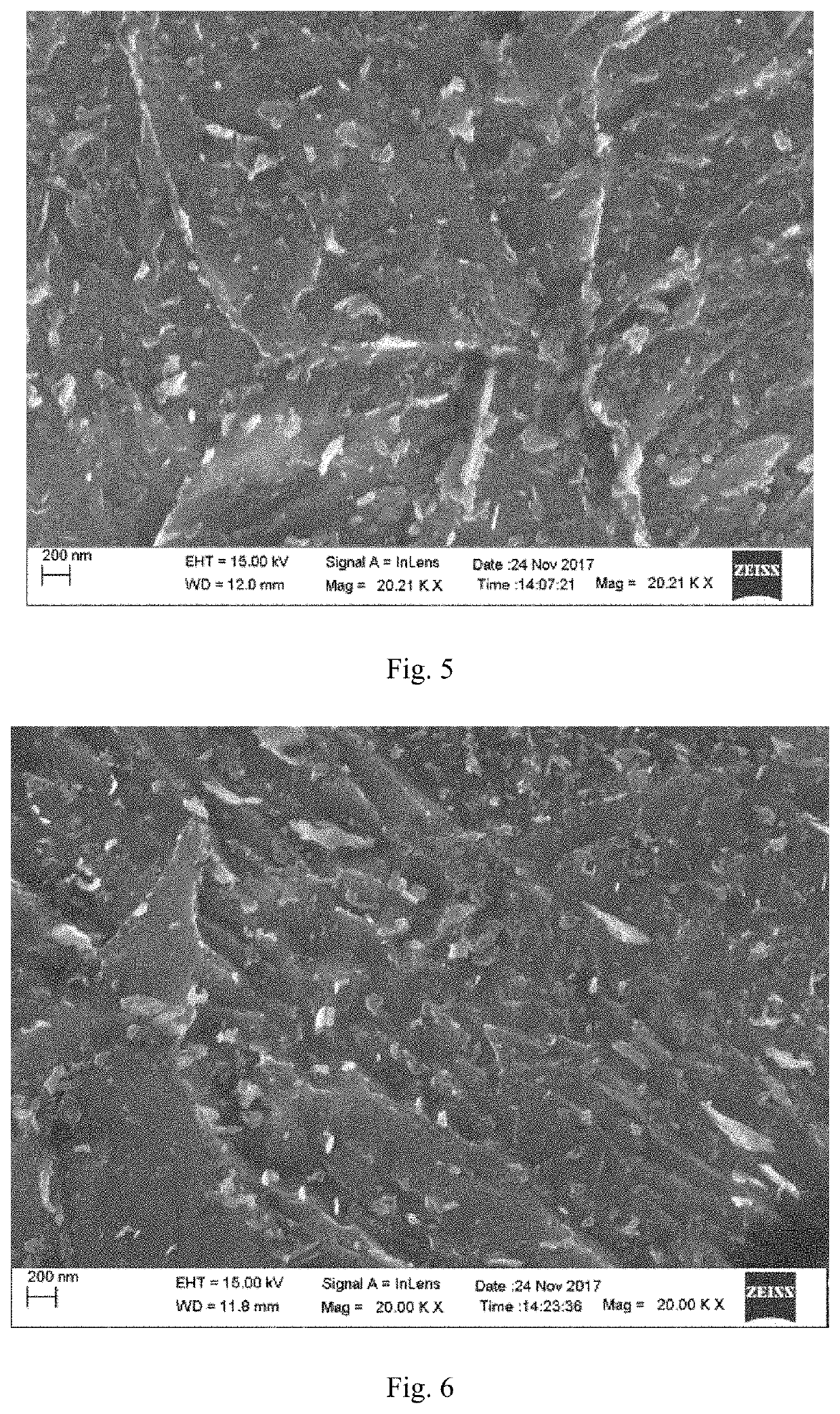Method for manufacturing cold-rolled or zinc-plated dual-phase steel plate over 980 mpa
- Summary
- Abstract
- Description
- Claims
- Application Information
AI Technical Summary
Benefits of technology
Problems solved by technology
Method used
Image
Examples
Embodiment Construction
[0023]It is intended herein to solve the problems of edge cracking after cold rolling, sharp thickness fluctuation after cold rolling and the like that occur in manufacturing by a thermal insulating process with or without a heat source after hot rolling and coiling, so as to obtain good cold-rolling manufacturability. To this end, according to the present disclosure, the coiling temperature is controlled to be 450° C. or higher; the thermal insulation temperature of the hot-rolled coil in the thermal insulation enclosure is controlled to be 450° C. or higher; and the thermal insulation time is controlled to be within 20 hours, for example, the thermal insulation time is 1-20 hours. In some embodiments, in the manufacturing method according to the present disclosure, after hot rolling, coiling, bundling and on-line thermal insulation, a slab is directly transferred to be cold rolled+continuously annealed or cold rolled+continuously annealed+galvanized to obtain a cold-rolled or galv...
PUM
| Property | Measurement | Unit |
|---|---|---|
| Temperature | aaaaa | aaaaa |
| Temperature | aaaaa | aaaaa |
| Fraction | aaaaa | aaaaa |
Abstract
Description
Claims
Application Information
 Login to View More
Login to View More - R&D
- Intellectual Property
- Life Sciences
- Materials
- Tech Scout
- Unparalleled Data Quality
- Higher Quality Content
- 60% Fewer Hallucinations
Browse by: Latest US Patents, China's latest patents, Technical Efficacy Thesaurus, Application Domain, Technology Topic, Popular Technical Reports.
© 2025 PatSnap. All rights reserved.Legal|Privacy policy|Modern Slavery Act Transparency Statement|Sitemap|About US| Contact US: help@patsnap.com



